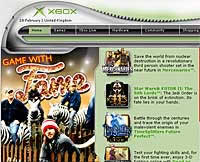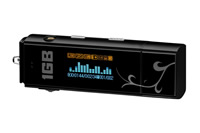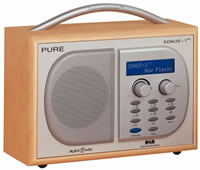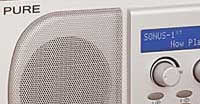 Microsoft is teaming up with one of Japan’s hotshot video game developers to create games for its next-generation video game console, XBox2 – a sure-fire sign that it’s determined to grab a fat slice of the Japanese market.
Microsoft is teaming up with one of Japan’s hotshot video game developers to create games for its next-generation video game console, XBox2 – a sure-fire sign that it’s determined to grab a fat slice of the Japanese market.
Having created compelling games for both Nintendo and Sony in the past, renowned Japanese video game developer Hironobu Sakaguchi has been signed up by Microsoft in the hope that he’ll sprinkle some fairy dust over their next-generation Xbox system.
Sakaguchi’s new company, Tokyo-based Mistwalker, will work with Microsoft’s game studio in Tokyo to make the games.
“This is a shot across the bow that we are serious about the Japanese market,” said Peter Moore, corporate vice president of worldwide marketing and publishing at Microsoft. “This is but the first salvo in what is going to be an interesting year.”
Things haven’t worked out too well for Microsoft’s XBox so far in Japan: disappointing sales followed its launch in 2002, with just 1.7 million units being shifted in all of Japan and Asia Pacific, placing it a distant third behind market leaders Sony and Nintendo.
Microsoft hopes that the collaboration with Sakaguchi’s game development studio, Mistwalker, will send sales soaring.
“Lately, we’ve seen only sequels released on the domestic game market,” Sakaguchi said. “I want to create something gamers can immerse themselves in and recall for a long time afterward by offering a new type of fun that only next-generation machines can provide.”
 A founding member of former video game software developer Square Co., the 42-year-old is famed for creating the role-playing series, ‘Final Fantasy’, which has shifted more than 60 million copies to date.
A founding member of former video game software developer Square Co., the 42-year-old is famed for creating the role-playing series, ‘Final Fantasy’, which has shifted more than 60 million copies to date.
It hasn’t all been smooth sailing for Sakaguchi however. His attempt to cross into film with a US$210 million (€158m/£109m) movie using state-of-the-art computer animation to create lifelike human characters didn’t hit pay dirt.
Released in 2001, “Final Fantasy: The Spirits Within” proved to be a box office flop and Sakaguchi resigned from Square as a result.
Microsoft is hoping that Sakaguchi’s experience in both role-playing games and high-end animation could provide the leverage to persuade gamers to upgrade to its next system, which will support high-definition TV formats and improved computer graphics.
“Sakaguchi has taken role-playing games – traditionally a niche market – and introduced them to a broad and diverse audience across the globe,” Peter Moore, corporate vice president of worldwide marketing and publishing at Microsoft, said in a statement. “We are ecstatic to work with Sakaguchi.”
The industry remains rife with rumours about when the XBox2 might finally launch, with some suggesting that it may try to surprise the gaming world by showing its Xbox 2 console well before this May’s E3 show in Los Angeles.
According to online sources, the Redmond software giant has an Xbox 2 conference of ‘significant importance’ slated for some point in March 2005.
xbox2-news
Microsoft
Mistwalker
“Final Fantasy: The Spirits Within”
 America Online has announced plans to enable users of its instant messaging service (AIM) to see when friends and business associates are online, even if they’re not on the contact list.
America Online has announced plans to enable users of its instant messaging service (AIM) to see when friends and business associates are online, even if they’re not on the contact list.  AOL has also announced a relationship with CareerBuilder.com to bring together recruiters and online job applicants. A prospective employer, who spots a job seeker’s résumé with an AIM address, can instantly send a message to that person in real time.
AOL has also announced a relationship with CareerBuilder.com to bring together recruiters and online job applicants. A prospective employer, who spots a job seeker’s résumé with an AIM address, can instantly send a message to that person in real time.  The International Football Association Board has agreed to trial microchip technology, which can determine whether a ball has crossed the goal line.
The International Football Association Board has agreed to trial microchip technology, which can determine whether a ball has crossed the goal line.  Destiny Media Technologies has announced a new version of its proprietary anti-piracy and digital distribution system, Promo Only MPE 1.1, designed to secure electronic music distribution within the music industry.
Destiny Media Technologies has announced a new version of its proprietary anti-piracy and digital distribution system, Promo Only MPE 1.1, designed to secure electronic music distribution within the music industry.  “The new build was modified with the customers’ ease of use in mind,” gushed Dean Ernst, Director of the MPE project at Promo Only. “The response to version 1.1 has been unprecedented and reflective of the overwhelming number of users signed-on to date.”
“The new build was modified with the customers’ ease of use in mind,” gushed Dean Ernst, Director of the MPE project at Promo Only. “The response to version 1.1 has been unprecedented and reflective of the overwhelming number of users signed-on to date.”  Jens of Sweden has unveiled its latest cool digital music player which they reckon will give iPod Shuffle a run for its money.
Jens of Sweden has unveiled its latest cool digital music player which they reckon will give iPod Shuffle a run for its money.  Rumours pointing at Apple as a potential bidder for TiVo have given the digital video recorder company’s shares a healthy boost – and got people wondering whether the deal would be a good fit.
Rumours pointing at Apple as a potential bidder for TiVo have given the digital video recorder company’s shares a healthy boost – and got people wondering whether the deal would be a good fit.  Nearly every media and technology company is aiming at the living room now, either with Media Centre-style PCs or other digital hubs to spread content such as video and music around the home.
Nearly every media and technology company is aiming at the living room now, either with Media Centre-style PCs or other digital hubs to spread content such as video and music around the home.  Sony has announced that it is to end production on its Clie line of PDAs in Japan.
Sony has announced that it is to end production on its Clie line of PDAs in Japan.  Our guess is that they’re going to focus their energies on ramping up the feature list on Sony Ericsson smartphones, developing the PlayStation Portable and finally producing the iPod killer they so desperately need.
Our guess is that they’re going to focus their energies on ramping up the feature list on Sony Ericsson smartphones, developing the PlayStation Portable and finally producing the iPod killer they so desperately need.  Apple has updated its iPod photo line-up with a new slim 30GB model, holding up to 7,500 songs, for just £249 ($475, e360) and a new 60GB model, holding up to 15,000 songs, for £309 ($590, e446)
Apple has updated its iPod photo line-up with a new slim 30GB model, holding up to 7,500 songs, for just £249 ($475, e360) and a new 60GB model, holding up to 15,000 songs, for £309 ($590, e446)  The truth is that the iPod photo seems to be far better as a versatile MP3 player and photo presentation unit rather than something for serious photographers to use for direct-to-camera storage.
The truth is that the iPod photo seems to be far better as a versatile MP3 player and photo presentation unit rather than something for serious photographers to use for direct-to-camera storage.  A handy Google search feature went live this week that lets users find showtimes at nearby movie theatres using either their computer or mobile phones and other wireless devices that use short-message services.
A handy Google search feature went live this week that lets users find showtimes at nearby movie theatres using either their computer or mobile phones and other wireless devices that use short-message services.  PURE Digital has announced its new PURE SONUS-1XT DAB digital radio, an enhanced alarm radio with unique iVOX voice feedback technology.
PURE Digital has announced its new PURE SONUS-1XT DAB digital radio, an enhanced alarm radio with unique iVOX voice feedback technology.  It looks reasonable too, kitted out in smart maple wood casework with a pearlescent white front fronted with a silver grille and control panel with scrolling blue LCD text display.
It looks reasonable too, kitted out in smart maple wood casework with a pearlescent white front fronted with a silver grille and control panel with scrolling blue LCD text display.